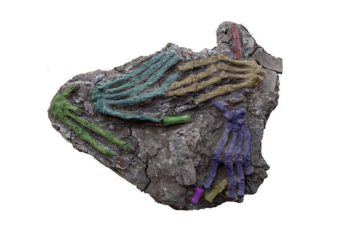Franz Lidz in The New York Times:
 Aristotle called the hand the “tool of tools”; Kant, “the visible part of the brain.” The earliest works of art were handprints on the walls of caves. Throughout history hand gestures have symbolized the range of human experience: power, tenderness, creativity, conflict, even (bravo, Michelangelo) the touch of the divine. Without hands, civilization would be inconceivable. And so the discovery in 2011 of the bones of a dozen right hands, at a site where the ancient Egyptian city of Avaris (today known as Tell el-Dab’a) once stood, was particularly unsettling. The remains were unearthed, most with palms down, from three shallow pits near the throne room of a royal palace. The hands, along with numerous disarticulated fingers, were most likely buried during Egypt’s 15th dynasty, from 1640 B.C. to 1530 B.C. At the time, Egypt’s eastern Nile Delta was controlled by a dynasty called the Hyksos, which means “rulers of foreign countries.”
Aristotle called the hand the “tool of tools”; Kant, “the visible part of the brain.” The earliest works of art were handprints on the walls of caves. Throughout history hand gestures have symbolized the range of human experience: power, tenderness, creativity, conflict, even (bravo, Michelangelo) the touch of the divine. Without hands, civilization would be inconceivable. And so the discovery in 2011 of the bones of a dozen right hands, at a site where the ancient Egyptian city of Avaris (today known as Tell el-Dab’a) once stood, was particularly unsettling. The remains were unearthed, most with palms down, from three shallow pits near the throne room of a royal palace. The hands, along with numerous disarticulated fingers, were most likely buried during Egypt’s 15th dynasty, from 1640 B.C. to 1530 B.C. At the time, Egypt’s eastern Nile Delta was controlled by a dynasty called the Hyksos, which means “rulers of foreign countries.”
Although the Hyksos were described by the Ptolemaic Egyptian historian Manetho as “invaders of an obscure race” who conquered the region by force, recent research has shown that they descended from people who had immigrated peacefully over centuries from southwest Asia, now Israel and the Palestinian territories.
More here.
